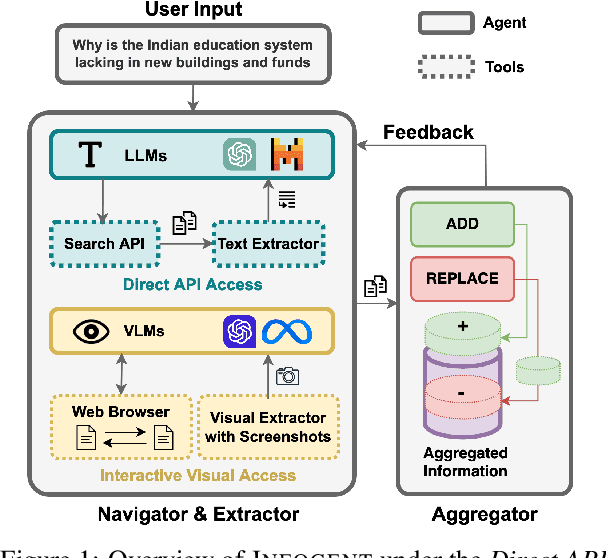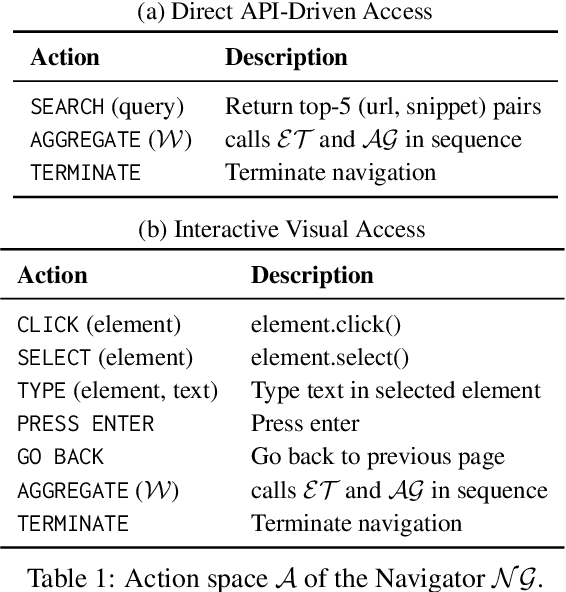Jeonghwan Kim
Konkuk University
FastMesh: Efficient Artistic Mesh Generation via Component Decoupling
Aug 27, 2025Abstract:Recent mesh generation approaches typically tokenize triangle meshes into sequences of tokens and train autoregressive models to generate these tokens sequentially. Despite substantial progress, such token sequences inevitably reuse vertices multiple times to fully represent manifold meshes, as each vertex is shared by multiple faces. This redundancy leads to excessively long token sequences and inefficient generation processes. In this paper, we propose an efficient framework that generates artistic meshes by treating vertices and faces separately, significantly reducing redundancy. We employ an autoregressive model solely for vertex generation, decreasing the token count to approximately 23\% of that required by the most compact existing tokenizer. Next, we leverage a bidirectional transformer to complete the mesh in a single step by capturing inter-vertex relationships and constructing the adjacency matrix that defines the mesh faces. To further improve the generation quality, we introduce a fidelity enhancer to refine vertex positioning into more natural arrangements and propose a post-processing framework to remove undesirable edge connections. Experimental results show that our method achieves more than 8$\times$ faster speed on mesh generation compared to state-of-the-art approaches, while producing higher mesh quality.
ThematicPlane: Bridging Tacit User Intent and Latent Spaces for Image Generation
Aug 08, 2025Abstract:Generative AI has made image creation more accessible, yet aligning outputs with nuanced creative intent remains challenging, particularly for non-experts. Existing tools often require users to externalize ideas through prompts or references, limiting fluid exploration. We introduce ThematicPlane, a system that enables users to navigate and manipulate high-level semantic concepts (e.g., mood, style, or narrative tone) within an interactive thematic design plane. This interface bridges the gap between tacit creative intent and system control. In our exploratory study (N=6), participants engaged in divergent and convergent creative modes, often embracing unexpected results as inspiration or iteration cues. While they grounded their exploration in familiar themes, differing expectations of how themes mapped to outputs revealed a need for more explainable controls. Overall, ThematicPlane fosters expressive, iterative workflows and highlights new directions for intuitive, semantics-driven interaction in generative design tools.
PARTONOMY: Large Multimodal Models with Part-Level Visual Understanding
May 27, 2025Abstract:Real-world objects are composed of distinctive, object-specific parts. Identifying these parts is key to performing fine-grained, compositional reasoning-yet, large multimodal models (LMMs) struggle to perform this seemingly straightforward task. In this work, we introduce PARTONOMY, an LMM benchmark designed for pixel-level part grounding. We construct PARTONOMY from existing part datasets and our own rigorously annotated set of images, encompassing 862 part labels and 534 object labels for evaluation. Unlike existing datasets that simply ask models to identify generic parts, PARTONOMY uses specialized concepts (e.g., agricultural airplane), and challenges models to compare objects' parts, consider part-whole relationships, and justify textual predictions with visual segmentations. Our experiments demonstrate significant limitations in state-of-the-art LMMs (e.g., LISA-13B achieves only 5.9% gIoU), highlighting a critical gap in their part grounding abilities. We note that existing segmentation-enabled LMMs (segmenting LMMs) have two key architectural shortcomings: they use special [SEG] tokens not seen during pretraining which induce distribution shift, and they discard predicted segmentations instead of using past predictions to guide future ones. To address these deficiencies, we train several part-centric LMMs and propose PLUM, a novel segmenting LMM that uses span tagging instead of segmentation tokens and that conditions on prior predictions in a feedback loop. We find that pretrained PLUM outperforms existing segmenting LMMs on reasoning segmentation, VQA, and visual hallucination benchmarks. In addition, PLUM finetuned on our proposed Explanatory Part Segmentation task is competitive with segmenting LMMs trained on significantly more segmentation data. Our work opens up new avenues towards enabling fine-grained, grounded visual understanding in LMMs.
Synthia: Novel Concept Design with Affordance Composition
Feb 25, 2025Abstract:Text-to-image (T2I) models enable rapid concept design, making them widely used in AI-driven design. While recent studies focus on generating semantic and stylistic variations of given design concepts, functional coherence--the integration of multiple affordances into a single coherent concept--remains largely overlooked. In this paper, we introduce SYNTHIA, a framework for generating novel, functionally coherent designs based on desired affordances. Our approach leverages a hierarchical concept ontology that decomposes concepts into parts and affordances, serving as a crucial building block for functionally coherent design. We also develop a curriculum learning scheme based on our ontology that contrastively fine-tunes T2I models to progressively learn affordance composition while maintaining visual novelty. To elaborate, we (i) gradually increase affordance distance, guiding models from basic concept-affordance association to complex affordance compositions that integrate parts of distinct affordances into a single, coherent form, and (ii) enforce visual novelty by employing contrastive objectives to push learned representations away from existing concepts. Experimental results show that SYNTHIA outperforms state-of-the-art T2I models, demonstrating absolute gains of 25.1% and 14.7% for novelty and functional coherence in human evaluation, respectively.
MM-PoisonRAG: Disrupting Multimodal RAG with Local and Global Poisoning Attacks
Feb 25, 2025Abstract:Multimodal large language models (MLLMs) equipped with Retrieval Augmented Generation (RAG) leverage both their rich parametric knowledge and the dynamic, external knowledge to excel in tasks such as Question Answering. While RAG enhances MLLMs by grounding responses in query-relevant external knowledge, this reliance poses a critical yet underexplored safety risk: knowledge poisoning attacks, where misinformation or irrelevant knowledge is intentionally injected into external knowledge bases to manipulate model outputs to be incorrect and even harmful. To expose such vulnerabilities in multimodal RAG, we propose MM-PoisonRAG, a novel knowledge poisoning attack framework with two attack strategies: Localized Poisoning Attack (LPA), which injects query-specific misinformation in both text and images for targeted manipulation, and Globalized Poisoning Attack (GPA) to provide false guidance during MLLM generation to elicit nonsensical responses across all queries. We evaluate our attacks across multiple tasks, models, and access settings, demonstrating that LPA successfully manipulates the MLLM to generate attacker-controlled answers, with a success rate of up to 56% on MultiModalQA. Moreover, GPA completely disrupts model generation to 0% accuracy with just a single irrelevant knowledge injection. Our results highlight the urgent need for robust defenses against knowledge poisoning to safeguard multimodal RAG frameworks.
Learning to Transfer Human Hand Skills for Robot Manipulations
Jan 07, 2025Abstract:We present a method for teaching dexterous manipulation tasks to robots from human hand motion demonstrations. Unlike existing approaches that solely rely on kinematics information without taking into account the plausibility of robot and object interaction, our method directly infers plausible robot manipulation actions from human motion demonstrations. To address the embodiment gap between the human hand and the robot system, our approach learns a joint motion manifold that maps human hand movements, robot hand actions, and object movements in 3D, enabling us to infer one motion component from others. Our key idea is the generation of pseudo-supervision triplets, which pair human, object, and robot motion trajectories synthetically. Through real-world experiments with robot hand manipulation, we demonstrate that our data-driven retargeting method significantly outperforms conventional retargeting techniques, effectively bridging the embodiment gap between human and robotic hands. Website at https://rureadyo.github.io/MocapRobot/.
Infogent: An Agent-Based Framework for Web Information Aggregation
Oct 24, 2024



Abstract:Despite seemingly performant web agents on the task-completion benchmarks, most existing methods evaluate the agents based on a presupposition: the web navigation task consists of linear sequence of actions with an end state that marks task completion. In contrast, our work focuses on web navigation for information aggregation, wherein the agent must explore different websites to gather information for a complex query. We consider web information aggregation from two different perspectives: (i) Direct API-driven Access relies on a text-only view of the Web, leveraging external tools such as Google Search API to navigate the web and a scraper to extract website contents. (ii) Interactive Visual Access uses screenshots of the webpages and requires interaction with the browser to navigate and access information. Motivated by these diverse information access settings, we introduce Infogent, a novel modular framework for web information aggregation involving three distinct components: Navigator, Extractor and Aggregator. Experiments on different information access settings demonstrate Infogent beats an existing SOTA multi-agent search framework by 7% under Direct API-Driven Access on FRAMES, and improves over an existing information-seeking web agent by 4.3% under Interactive Visual Access on AssistantBench.
Aligning LLMs with Individual Preferences via Interaction
Oct 04, 2024Abstract:As large language models (LLMs) demonstrate increasingly advanced capabilities, aligning their behaviors with human values and preferences becomes crucial for their wide adoption. While previous research focuses on general alignment to principles such as helpfulness, harmlessness, and honesty, the need to account for individual and diverse preferences has been largely overlooked, potentially undermining customized human experiences. To address this gap, we train LLMs that can ''interact to align'', essentially cultivating the meta-skill of LLMs to implicitly infer the unspoken personalized preferences of the current user through multi-turn conversations, and then dynamically align their following behaviors and responses to these inferred preferences. Our approach involves establishing a diverse pool of 3,310 distinct user personas by initially creating seed examples, which are then expanded through iterative self-generation and filtering. Guided by distinct user personas, we leverage multi-LLM collaboration to develop a multi-turn preference dataset containing 3K+ multi-turn conversations in tree structures. Finally, we apply supervised fine-tuning and reinforcement learning to enhance LLMs using this dataset. For evaluation, we establish the ALOE (ALign With CustOmized PrEferences) benchmark, consisting of 100 carefully selected examples and well-designed metrics to measure the customized alignment performance during conversations. Experimental results demonstrate the effectiveness of our method in enabling dynamic, personalized alignment via interaction.
Search and Detect: Training-Free Long Tail Object Detection via Web-Image Retrieval
Sep 26, 2024



Abstract:In this paper, we introduce SearchDet, a training-free long-tail object detection framework that significantly enhances open-vocabulary object detection performance. SearchDet retrieves a set of positive and negative images of an object to ground, embeds these images, and computes an input image-weighted query which is used to detect the desired concept in the image. Our proposed method is simple and training-free, yet achieves over 48.7% mAP improvement on ODinW and 59.1% mAP improvement on LVIS compared to state-of-the-art models such as GroundingDINO. We further show that our approach of basing object detection on a set of Web-retrieved exemplars is stable with respect to variations in the exemplars, suggesting a path towards eliminating costly data annotation and training procedures.
ARMADA: Attribute-Based Multimodal Data Augmentation
Aug 19, 2024



Abstract:In Multimodal Language Models (MLMs), the cost of manually annotating high-quality image-text pair data for fine-tuning and alignment is extremely high. While existing multimodal data augmentation frameworks propose ways to augment image-text pairs, they either suffer from semantic inconsistency between texts and images, or generate unrealistic images, causing knowledge gap with real world examples. To address these issues, we propose Attribute-based Multimodal Data Augmentation (ARMADA), a novel multimodal data augmentation method via knowledge-guided manipulation of visual attributes of the mentioned entities. Specifically, we extract entities and their visual attributes from the original text data, then search for alternative values for the visual attributes under the guidance of knowledge bases (KBs) and large language models (LLMs). We then utilize an image-editing model to edit the images with the extracted attributes. ARMADA is a novel multimodal data generation framework that: (i) extracts knowledge-grounded attributes from symbolic KBs for semantically consistent yet distinctive image-text pair generation, (ii) generates visually similar images of disparate categories using neighboring entities in the KB hierarchy, and (iii) uses the commonsense knowledge of LLMs to modulate auxiliary visual attributes such as backgrounds for more robust representation of original entities. Our empirical results over four downstream tasks demonstrate the efficacy of our framework to produce high-quality data and enhance the model performance. This also highlights the need to leverage external knowledge proxies for enhanced interpretability and real-world grounding.
 Add to Chrome
Add to Chrome Add to Firefox
Add to Firefox Add to Edge
Add to Edge